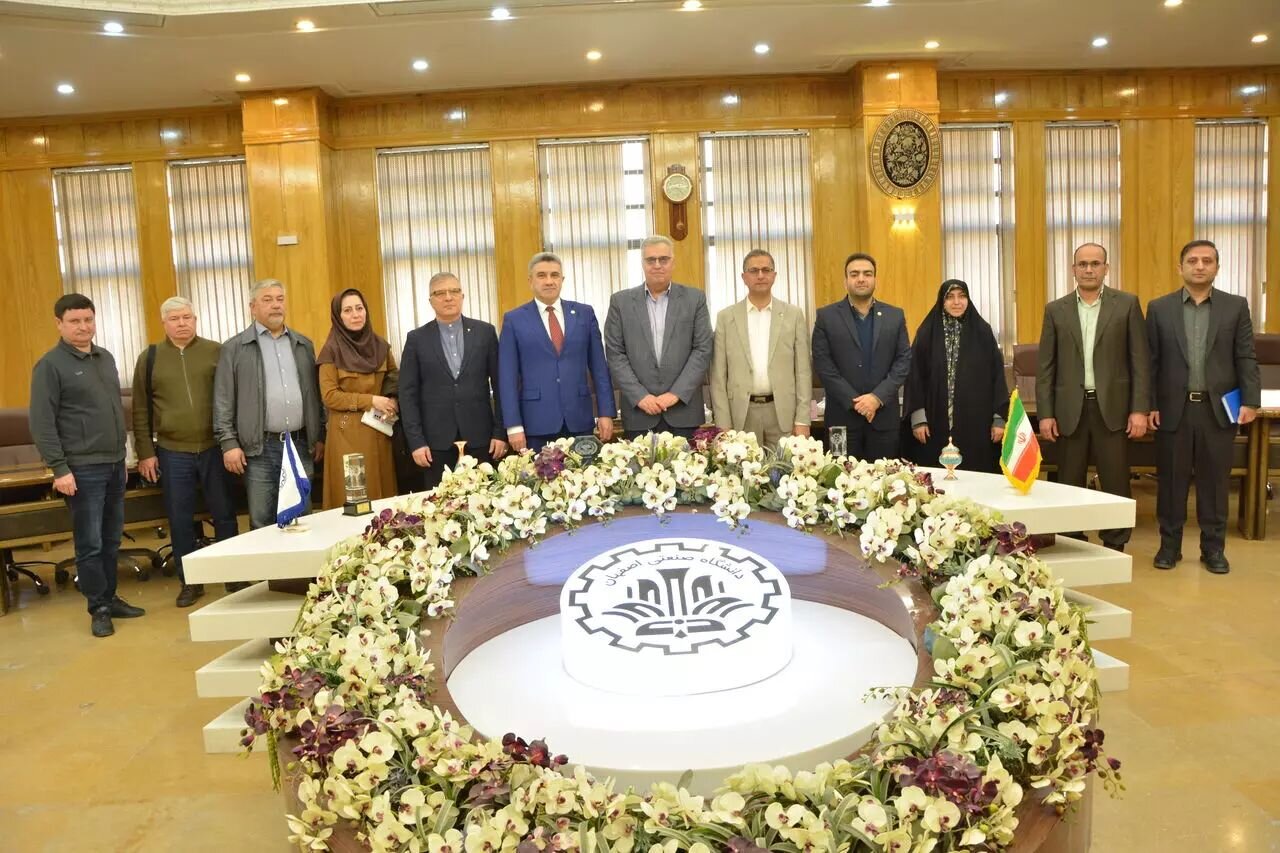Iran, Tatarstan Universities to Bolster Academic Ties
The universities of Iran and Tatarstan have signed 12 memorandums of understanding (MOUs) to deepen their scientific cooperation, according to the head of the Ministry and Educational Science of the Republic of Tatarstan.

The MOUs are in the fields of agriculture, medicine, space technology, and sport, IRNA quoted Ilsur Khadiullin as saying on Wednesday.
Over 1,840 Iranian students are studying in Tatarstan, he added.
Rustam Nurgaliyevich Minnikhanov, the president of the Republic of Tatarstan, heading a fifty-member delegation of ministers and traders visited Iran on February 14.
Global ranking
A total of 435 Iranian institutions are among 11,989 institutions ranked in Webometrics world ranking 2024.
Tehran University is the top among Iranian institutions. Its ranking has improved from 305 in 2023 to 285 in 2024, Mehr news agency reported.
Tehran University of Medical Sciences (445), Shahid Beheshti University of Medical Science (606), Sharif University of Technology (639), Amirkabir University of Technology (792), Iran Science and Technology (890), Isfahan University of Medical Sciences (920), Iran Medical Sciences University (940), Ferdowsi University of Mashhad (940), and Shahid Beheshti University (967) are ranked second to tenth, respectively, in the country.
The Ranking Web is not a ranking of the websites of universities. It is a Ranking of Universities. It uses both webometric (all missions) and bibliometric (research mission) indicators.
According to the results of the 2023-2024 edition of the University Ranking by Academic Performance (URAP), 71 Iranian institutions were included in the ranking compared to 64 institutions in the 2022-2023 edition.
URAP World Ranking is based on six academic performance indicators including number of articles, citations, total document, scientific productivity, research impact, and international collaboration.
In the academic performance ranking of 71 universities in Iran, Tehran University was ranked first nationally with a global rank of 231, IRNA reported.
Tehran University of Medical Science (277), and Shahid Beheshti University of Medical Science (436) were ranked second and third, respectively.
In the 2023 edition of URAP, the University of Tehran was ranked first nationally with a global rank of 231.
Golestan University of Medical Science (1307), University of Hormozgan, Amol University of Special Modern Technologies, Vali-e-Asr University of Rafsanjan, Ilam University, University of Science and Technology of Mazandaran are institutions that have recently been ranked among the best in the world in the 2023-2024 edition.
The main objective of URAP is to develop a ranking system for world universities based on academic performance indicators that reflect the quality and the quantity of their scholarly publications.
In line with this objective URAP has been annually releasing the World Ranking of Higher Education Institutions since 2010, and Field Rankings since 2011.
The most recent ranking gathered data about 3,000 Higher Education Institutes (HEI) in an effort to rank these organizations by their academic performance. The overall score of each HEI was based on its performance over several indicators.
Since URAP is an academic performance-based ranking, publications constitute the basis of the ranking methodology. Both quality and quantity of publications and international research collaboration performance are used as indicators.
In December 2023, the Islamic World Science Citation Center (ISC) released a report, ranking 115 governmental and 17 non-governmental universities according to six indices.
Education counts for 30 percent, Research counts for 25 percent, Technology and Innovation counts for 20 percent, International Outlook counts for 10 percent, and Social Services, Infrastructure, and Facilities counts for 5 percent, ISNA quoted the ISC head Ahmad Fazelzadeh as saying.
The universities of Tehran, Ferdowsi of Mashhad, Tarbiat Modarres, Shahid Beheshti, and Shiraz were placed first to fifth in the ranking.
The Times Higher Education (THE) World University Rankings 2024 has listed 36 Iranian universities among the world’s top 1,000 institutions, compared with 29 universities in 2023.
The Times Higher Education World University Rankings 2024 include 1,904 universities across 108 countries and regions.
The ranking is based on 18 carefully calibrated performance indicators that measure an institution’s performance across five areas: teaching, research environment, research quality, industry, and international outlook.
Sharif University of Technology ranked first among Iranian universities with a rank in the range of 301-350.
Attracting intl. students
Iran is among the 15 successful countries in attracting international students, according to Mohammad Javad Salmanpour, the deputy head of the Organization for Student Affairs.
“We have the ability and capacity to have more than 250,000 foreign students by 2026,” he stated.
Currently, nearly 100,000 foreign nationals are studying in Iran, more than 90 percent of whom are from Iraq and Afghanistan and the rest are from other countries.
These students are studying in different fields of science, research and technology, health and medical education, and also in the fields of humanities, Islamic sciences, Persian language and literature, law, fundamentals of Islamic law, management fields, economics, psychology, social sciences, as well as engineering, agricultural sciences, animal sciences, and basic sciences.
In September 2023, Hashem Dadashpour, the head of the Organization of Student Affairs, said that the Ministry of Science is planning to increase the number of international students to some 320,000 from currently around 100,000 by 2026.
“There was an increase in the number of international students over the sixth National Development Plan (2017-2021). The seventh development plan (2022-2026) has also put increasing the figure to around 320,000 on the agenda,” he explained.
“Strengthening scientific authority, developing public diplomacy, and expanding the Persian language are the three main reasons for attracting international students,” Dadashpour said, IRIB reported.
He went on to say that the principle of attracting international students is a major strategy and plan for the Ministry of Science.”
Universities should increase their interactions and scientific exchanges in order to attract international students and accelerate internationalization in the region and the world, he highlighted.
Iranian universities achieved good ranks at the global level and based on the evaluations of the world’s most prestigious institutions so that there is the capacity to attract international students, he said.
